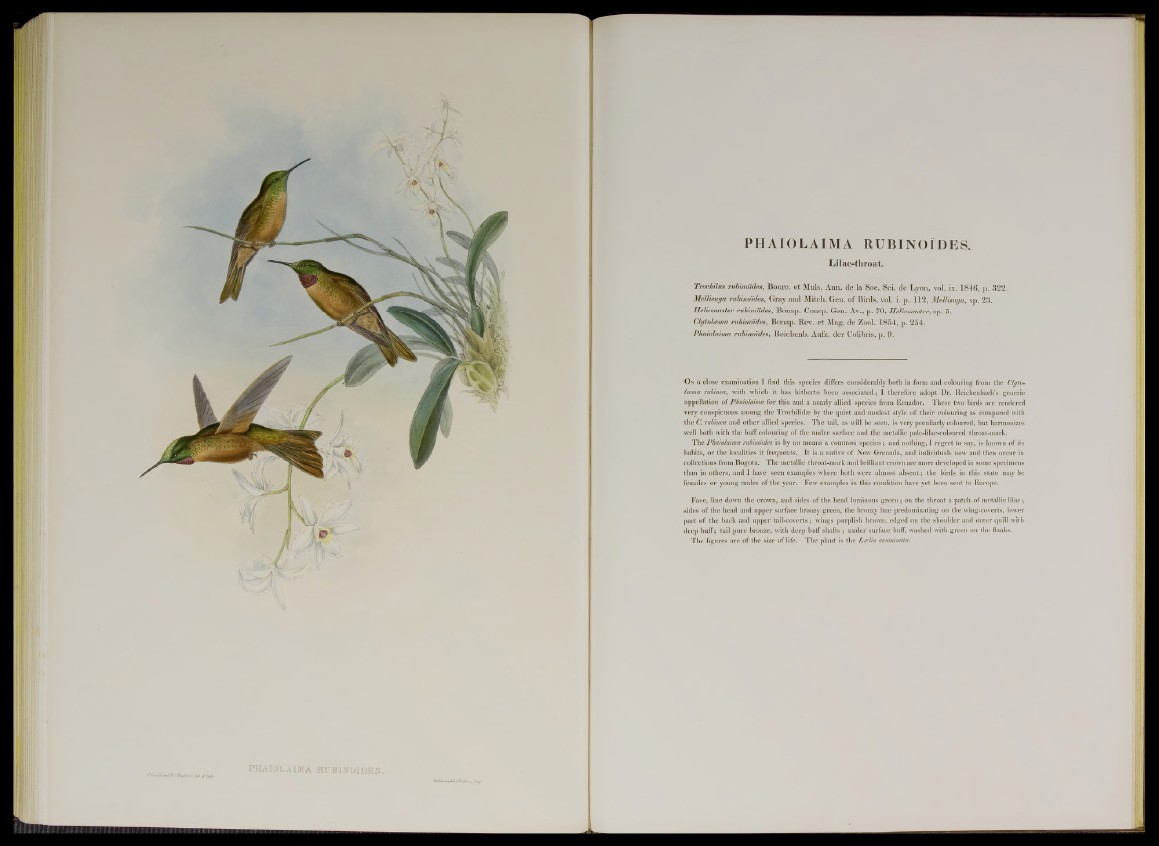
PHAIOLAIMA RUBIMOÏDES.
PHAIOLAIMA RUBINOÏDES.
Lilac-throat.
TrocMlu8 rubinoïdes, Bourc. e t Muls. Ann. de la Soc. Sci. de Lyon, vol. ix. 1846, p. 322.
Mettisuga rubinoïdes, Gray an d Mitch. Gen. o f Birds, vol. i. p. 112, Mettisuga, sp. 23.
Heliomaster rubinoïdes, Bonap. Consp. Gen. Av., p. 70, Heliomaster, sp. 5.
Clytolcema rubinoïdes, Bonap. Rev. e t Mag. de Zool. 1854, p. 254.
Phaiolaima nibinoïdes, Reichenb. Aufz. der Colibris, p. 9.
On a close examination I find this species differs considerably both in form and colouring from the Clytolcema
rubinea, with which it has hitherto been associated; I therefore adopt Dr. Reicbenbach’s generic
appellation of Phaiolaima for this and a nearly allied species from Ecuador. These two birds are rendered
very conspicuous among the Trochilidse by the quiet and modest style of their colouring as compared with
the C. rubinea and other allied species. The tail, as will be seen, is very peculiarly coloured, but harmonizes
well both with the buff colouring of the under surface and the metallic pale-lilac-coloured throat-mark.
The Phaiolaima rubinoides is by no means a common species; and nothing, I regret to say, is known of its
habits, or the localities it frequents. It is a native of New Grenada, and individuals now and then occur in
collections from Bogota. The metallic throat-mark and brilliant crown are more developed in some specimens
than in others, and I have seen examples where both were almost absent; the birds in this state may be
females or young males of the year. Few examples in this condition have yet been sent to Europe.
Face, line down the crown, and sides of the head luminous green; on the throat a patch of metallic lilac;
sides of the head and upper surface bronzy green, the bronzy hue predominating on the wing-coverts, lower
part of the back and upper tail-coverts; wings purplish brown, edged on the shoulder and outer quill with
deep buif; tail pure bronze, with deep buff shafts; under surface buff, washed with green on the flanks.
The figures are of the size of life. The plant is the Lcelia acuminata.